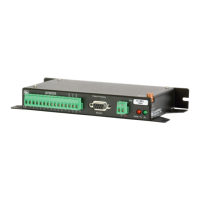AVW200-series 2-Channel Vibrating Wire Spectrum Analyzer Modules
At the AVW206 site, do the following steps:
1. Use DevConfig to configure the AVW206 for RF communications
(Sections 5.1 and 5.2.1).
2. If you are not using the default multiplexer, go to the
Deployment/Measurement tab in DevConfig and select the multiplexer
you are using (Section 5.1 and 5.2.1). The default multiplexer for the
AVW206 is the AM16/32A.
3. Attach the multiplexers to the AVW206 as shown in Figure 4.4.1-1.
4. Connect the sensors to the multiplexers.
Read more! Information about connecting the vibrating wire sensors to
the multiplexer is provided in the AM16/32B manual.
5. Connect an antenna (or antenna cable with Yagi or omnidirectional
antenna attached) to the Antenna Connector on the side of the AVW206.
Read more! Description of our antenna options is provided in Appendix C.
6. Use the power cable to connect the 12V and G terminals on the AVW206
to the 12V and G terminals on the PS100 or another power supply.
At the datalogger/RF401 site, do the following steps:
1. Configure the RF401 radio so that its parameters match the AVW206.
The protocol setting for the RF401 must be PB Aware or PB
Node.
NOTE
2. Attach an antenna (or antenna cable with Yagi or omnidirectional antenna
attached) to the Antenna Connector on the RF401.
3. Use the SC12 serial cable to attach the datalogger’s CS I/O port to the
RF401’s CS I/O port. The datalogger’s CS I/O port applies power to the
RF401.
Read more! More information about using spread spectrum radios is
provided in the RF401/RF411/RF416 Spread Spectrum Data
Radio/Modem manual.
4. Create a CRBasic program that includes the AVW200() instruction for
each of the multiplexers that the AVW200 will control.
Check the manufacturer’s specification for the sensors frequency
and excitation range before picking the begin/end frequencies
and excitation voltage.
NOTE
16

